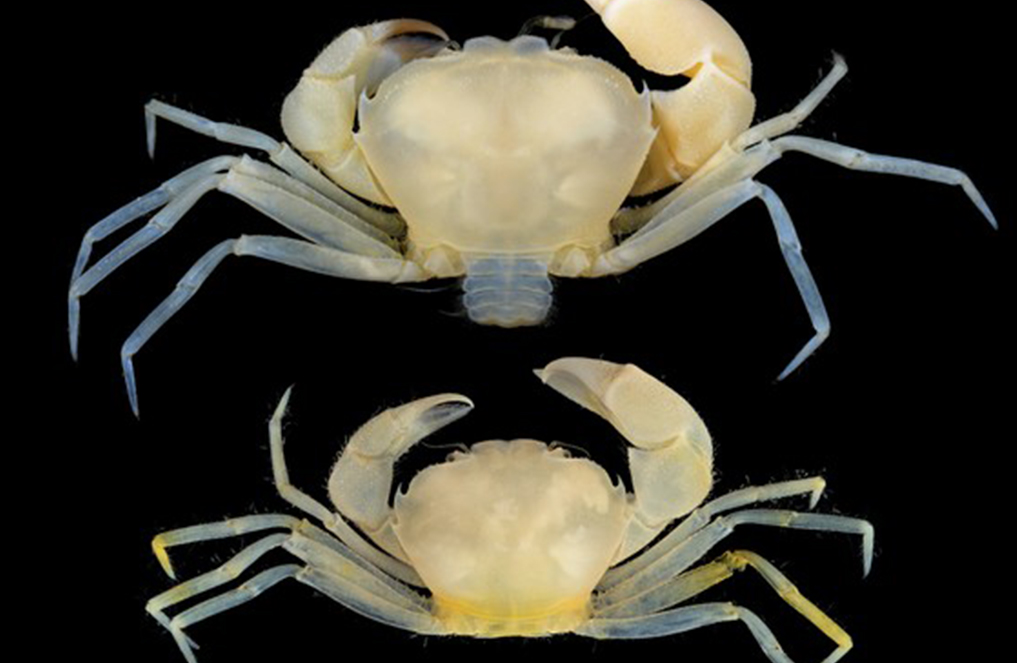New crab species goes viral
NUS zoologists discover a new species of marine crab and give it a catchy name.
Two zoologists from the Lee Kong Chian Natural History Museum (LKCNHM), Dr Jose Christopher E. MENDOZA and Prof Peter K. L. NG, have recently discovered and described a new genus and new species of marine crab from the coral reefs of Guam, published in the journal, ZooKeys (published by Pensoft). The crab’s two-part scientific name, Harryplax severus, was primarily intended by the authors to honour the person who first collected the crabs (Harry T. CONLEY), and also as a reference to how difficult and challenging it was to find them. The name, however, has made the crab species an internet sensation for a different reason. Dr Mendoza says, “We decided to be a bit cheeky about this naming business and inserted a double meaning into the name, making it also a nod to two very important characters of the much-loved Harry Potter book and film series: Harry himself, and Severus Snape. The fans went wild over that.” After the publisher, Pensoft, released the news of the discovery, the story was picked up by online news outlets, such as National Geographic, BBC, Time, and The Guardian, as well as several common interest sites.
However, the Harryplax crab is not just about celebrity namesakes. It is the latest of a series of new species discoveries from coral rubble beds, a type of reef habitat dominated by dead and broken corals. Most of the species that live there are small, rare and hard to find. They live out of sight, in the cavities formed amongst the coral fragments, rocks, and boulders. Oftentimes, they have physical adaptations similar to animals found living deep in caves, such as small eyes, pale colouration and long, slender legs. The research of Prof Ng and Dr Mendoza, spanning almost 20 years, has shown that rubble beds do harbour a rich and unique community. This has implications on conservation planning and the management of marine habitats, and seeks to correct misperceptions that seemingly “dead” and species-poor habitats can be sacrificed for development.

Figure shows the type specimens used to describe Harryplax severus, now deposited in the Zoological Reference Collection of the LKCNHM. The female holotype is above, and beneath it is the male paratype. [Image credit: Dr J.C.E. Mendoza].
Reference
Mendoza JCE*; Ng PKL, “Harryplax severus, a new genus and species of an unusual coral rubble-inhabiting crab from Guam (Crustacea, Brachyura, Christmaplacidae)” ZOOKEYS Issue: 647 Pages: 23-35 DOI: 10.3897/zookeys.647.11455 Published: 2017.
